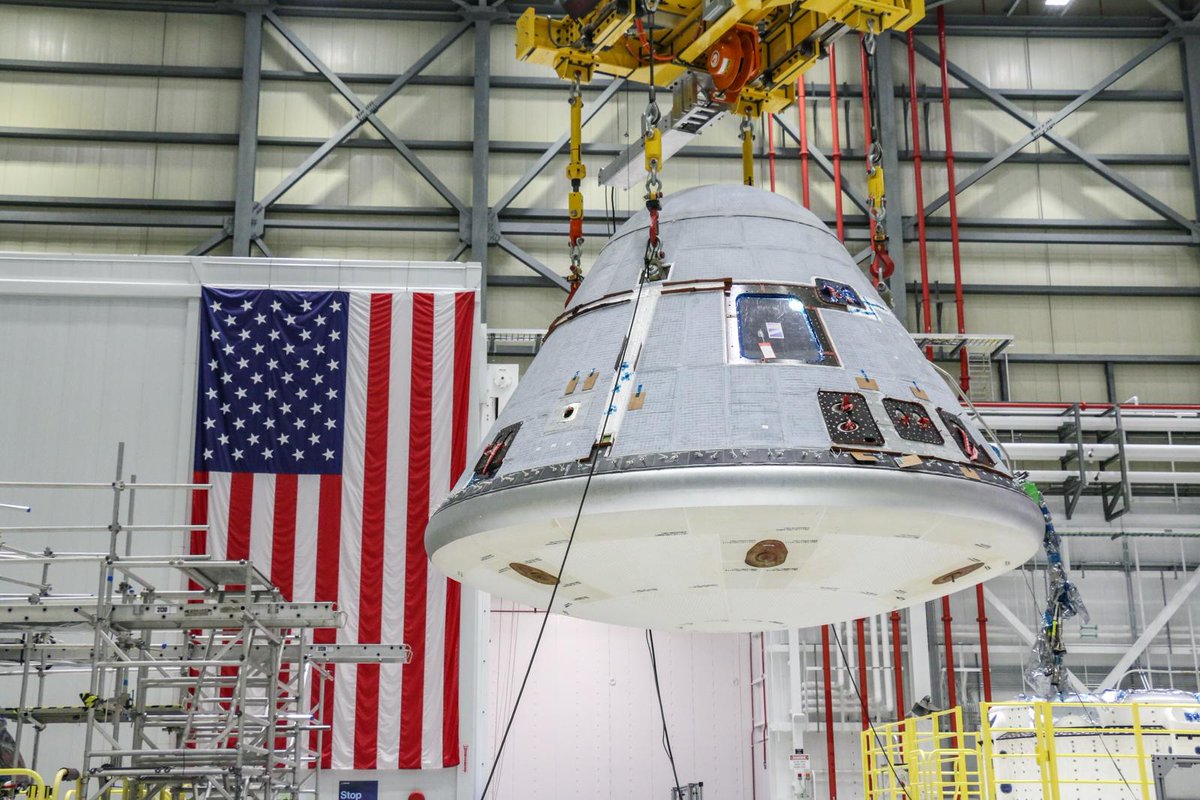Boeing's Starliner spacecraft software passes qualification review for next NASA test flight

Boeing passed a big spacecraft software test for its commercial crew spacecraft as it continues the long road to fixing the problems that bugged out a 2019 test flight to the International Space Station.
The company's first attempt to send an uncrewed CST-100 Starliner spacecraft to the orbital laboratory 13 months ago failed following a series of glitches and software issues. Two NASA reviews of the flawed flight in 2020 identified 80 corrections Boeing will need to address before making another attempt.
Boeing plans to make that second spaceflight in March, and on Monday (Jan. 18) the company outlined how the review process is going so far in a statement. Boeing announced it completed the formal requalification of the flight software ahead of the new mission, called Orbital Flight Test 2 (OFT-2). The effort is by no means finished, but the team has come far in the past year, a Boeing official said.
Related: Boeing's 1st Starliner flight test in photos
"The work this team put into exhaustively wringing out our software is a defining moment for the program," John Vollmer, vice president and program manager for Starliner, said in the statement. "We're smarter as a team having been through this process, and most importantly, we're smarter as a human spaceflight community."
Getting this far required a lot of work. The process began by evaluating the software requirements for Starliner and then performing testing associated with the verification.
Starliner's Avionics and Software Integration Lab (ASIL) in Houston underwent a review to ensure it was ready for the new testing. Additionally, software engineers validated the simulators and emulators for accuracy, and more assessments were performed to make sure the software was working well with Starliner's flight hardware.
Breaking space news, the latest updates on rocket launches, skywatching events and more!
Next came numerous tests to make sure the software was up to specifications, ranging from simple command verifications to "mission scenarios" integrated with the core software, Boeing said. This process made a rapid pivot to support virtual work last spring, when the coronavirus pandemic erupted and forced physical distancing protocols at manufacturing facilities across the world.
"Throughout all the turmoil 2020 handed us, this team remained energetic and inspired to be successful," Aaron Kraftcheck, Starliner's software test and verification manager, said in the same statement.
With software requalification in hand, Boeing has a few more things to do. Starliner launch provider United Launch Alliance — a joint venture between Boeing and Lockheed Martin — will work with Boeing to perform "hardware and software integrated test events" to ensure the rocket and spacecraft work well with each other, Boeing said. Starliner can launch on multiple vehicles, including ULA's Atlas V and Delta IV rockets.
Boeing also plans to perform code verification for docking and undocking procedures with NASA's International Space Station (ISS) program, along with a complete simulation of the OFT-2 test flight in ASIL. This last simulation will use flight hardware and the latest version of the flight software to see how the spacecraft behaves, and will take several days to proceed through all mission events from pre-launch to landing.
Related: Boeing defends Starliner space capsule ground tests after problematic debut flight
On Jan. 14, shortly before revealing the results of its software work, Boeing also announced it has installed a new cover for its NASA Docking System (NDS) on Starliner. The NDS is intended to safely dock and undock Starliner at the ISS autonomously.
The Boeing-made cover will protect NDS during the fiery reentry phase of each Starliner mission, when the spacecraft's hull reaches searing temperatures of about 3,000 degrees Fahrenheit (about 1,650 degrees Celsius), the company said.
"The NDS was originally designed for one-time use, however, adding the entry cover to protect its components during re-entry is expected to extend the system's life for multiple missions," Vajid Vayda, a Boeing system test engineer, said in the Jan. 14 announcement. As Starliner is also designed to be reusable, Vayda added he expects the same NDS can be used for multiple missions.
A reliable Starliner is part of the backbone of NASA's plan to increase crew size on the ISS. The agency has spent more than a decade supporting development of commercial crew vehicles to replace the seven-seat space shuttle, which retired after 30 years of service in 2011.
Russia ferried all crews to the space station between 2011 and 2020 using its three-seat Soyuz spacecraft, allowing ISS operations to continue with smaller crews. Meanwhile, NASA supported commercial vehicle development in a competitive selection process, tapping SpaceX and Boeing to split the $6.8 billion Commercial Crew Transportation Capability award in 2014.
So far, two SpaceX flights successfully ferried astronauts to the space station in 2020, marking a new era in human spaceflight; SpaceX and Boeing are each rated to carry up to four people in a single vehicle, up from three people on the Soyuz. Larger crews on the station can perform more science during a typical six-month mission, increasing the value of ISS as many of its partners seek to extend operations beyond 2024.
Follow Elizabeth Howell on Twitter @howellspace. Follow us on Twitter @Spacedotcom and on Facebook .

Elizabeth Howell (she/her), Ph.D., was a staff writer in the spaceflight channel between 2022 and 2024 specializing in Canadian space news. She was contributing writer for Space.com for 10 years from 2012 to 2024. Elizabeth's reporting includes multiple exclusives with the White House, leading world coverage about a lost-and-found space tomato on the International Space Station, witnessing five human spaceflight launches on two continents, flying parabolic, working inside a spacesuit, and participating in a simulated Mars mission. Her latest book, "Why Am I Taller?" (ECW Press, 2022) is co-written with astronaut Dave Williams.
